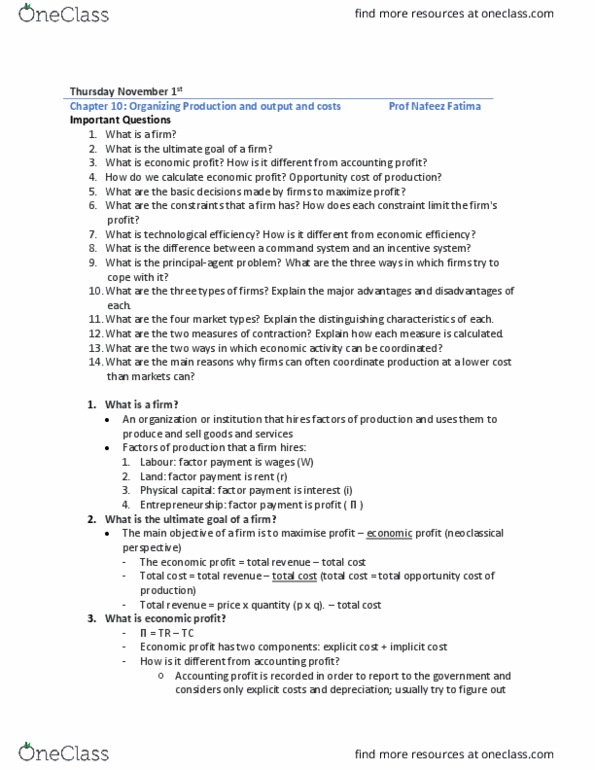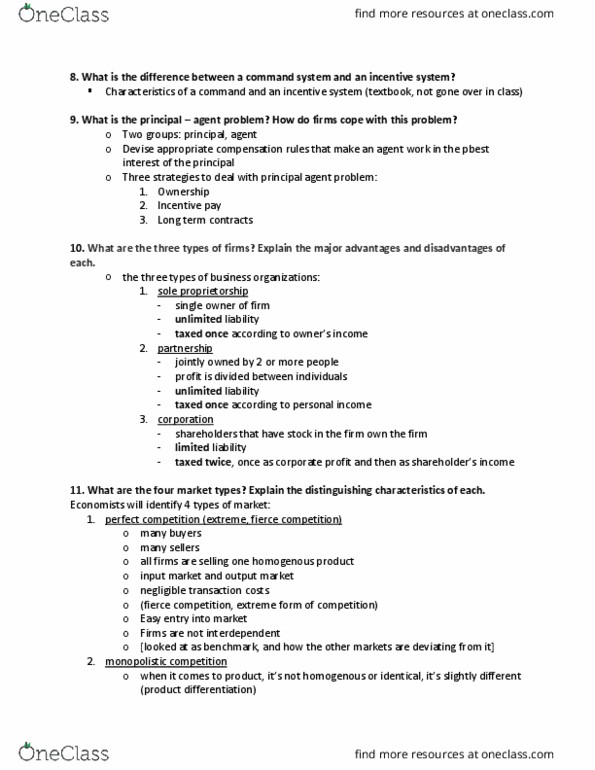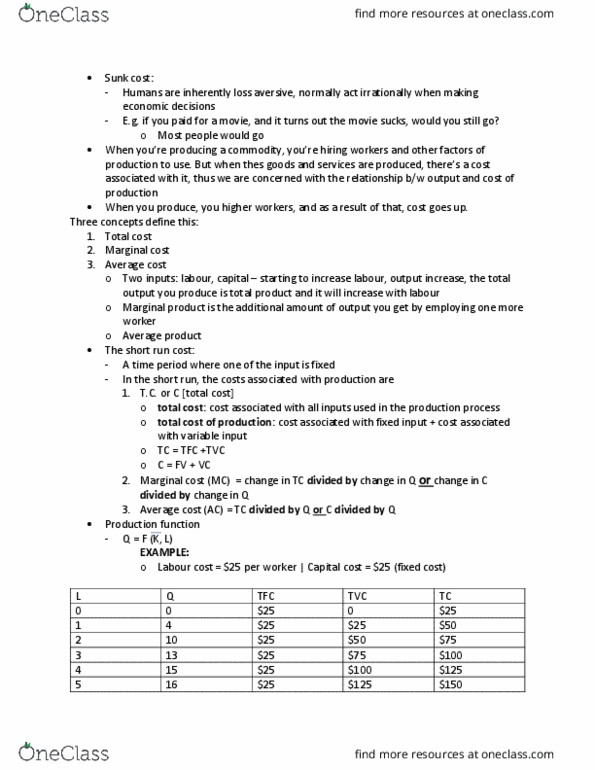ECON101 Lecture 18: lecture 16
ECON101 verified notes
18/25View all

8. What is the difference between a command system and an incentive system?
▪ Characteristics of a command and an incentive system (textbook, not gone over in class)
9. What is the principal – agent problem? How do firms cope with this problem?
o Two groups: principal, agent
o Devise appropriate compensation rules that make an agent work in the pbest
interest of the principal
o Three strategies to deal with principal agent problem:
1. Ownership
2. Incentive pay
3. Long term contracts
10. What are the three types of firms? Explain the major advantages and disadvantages of
each.
o the three types of business organizations:
1. sole proprietorship
- single owner of firm
- unlimited liability
- taxed once according to owner’s income
2. partnership
- jointly owned by 2 or more people
- profit is divided between individuals
- unlimited liability
- taxed once according to personal income
3. corporation
- shareholders that have stock in the firm own the firm
- limited liability
- taxed twice, once as corporate profit and then as shareholder’s income
11. What are the four market types? Explain the distinguishing characteristics of each.
Economists will identify 4 types of market:
1. perfect competition (extreme, fierce competition)
o many buyers
o many sellers
o all firms are selling one homogenous product
o input market and output market
o negligible transaction costs
o (fierce competition, extreme form of competition)
o Easy entry into market
o Firms are not interdependent
o [looked at as benchmark, and how the other markets are deviating from it]
2. monopolistic competition
o when it comes to product, it’s not homogenous or identical, it’s slightly different
(product differentiation)
Document Summary
Explain the major advantages and disadvantages of each: the three types of business organizations, sole proprietorship single owner of firm. Unlimited liability taxed once a(cid:272)(cid:272)o(cid:396)di(cid:374)g to o(cid:449)(cid:374)e(cid:396)"s i(cid:374)(cid:272)o(cid:373)e: partnership jointly owned by 2 or more people. B/c it takes less time to know about a firm, easier to reach out: economies of scale. Funds can achieve both economics of scale and economies of scope. Sometimes its better for firms to produce more than one commodity. Sometimes a firm can produce two outputs with lower costs. Related to the fact that firms can make costs cheaper by producing two commodities: team production. Long run production decision: sunk cost and sunk cost fallacy, short run output decision. Diminishing marginal returns: short run cost functions. Total cost (tc): total fixed costs (tfc, total variable costs (tvc) Average cost: average fixed cost (afc, average variable cost (avc, long run cost functions.




